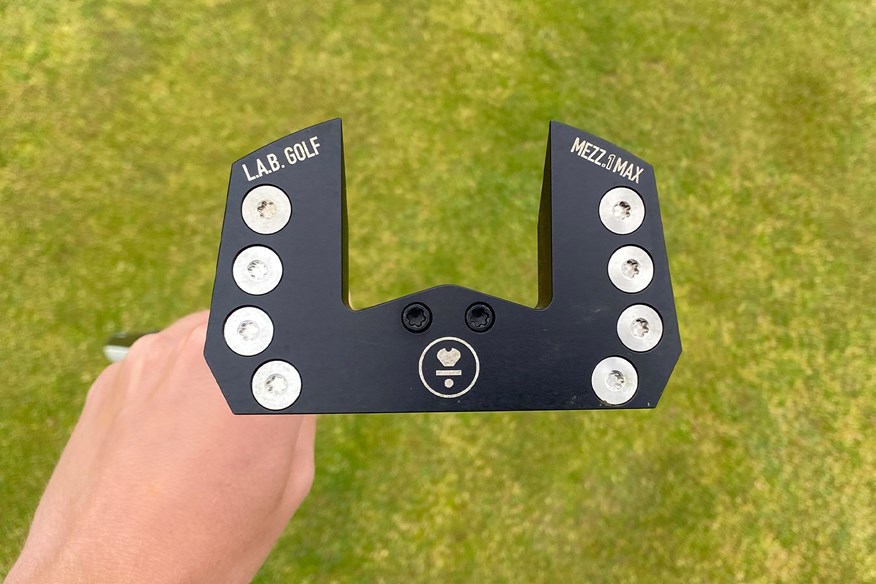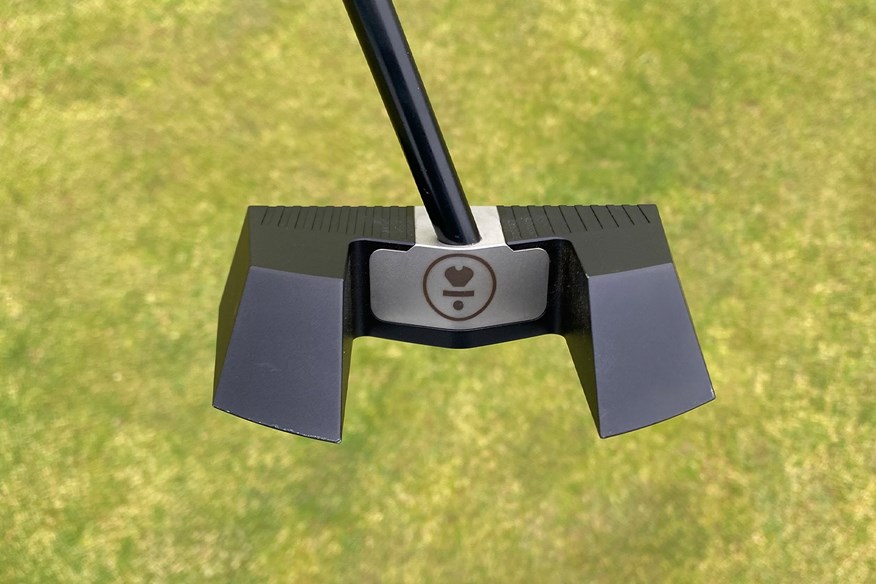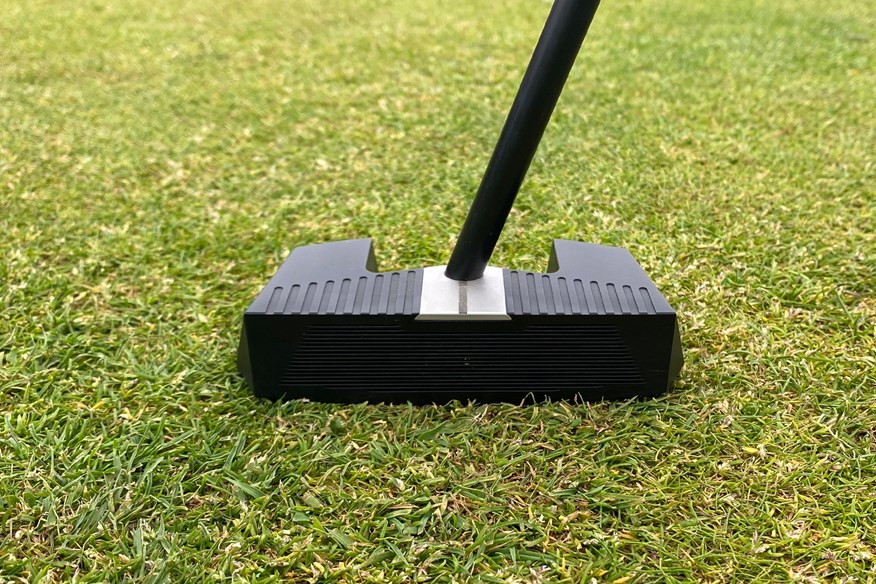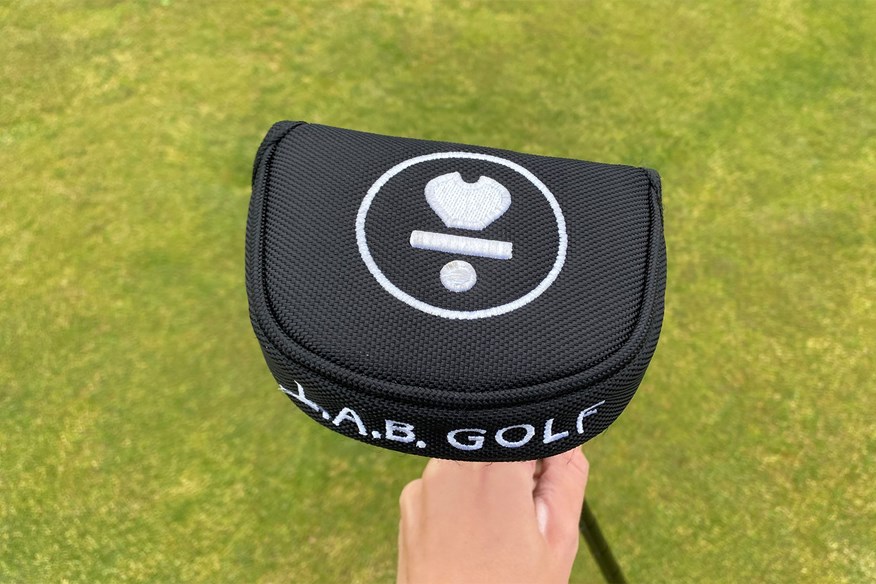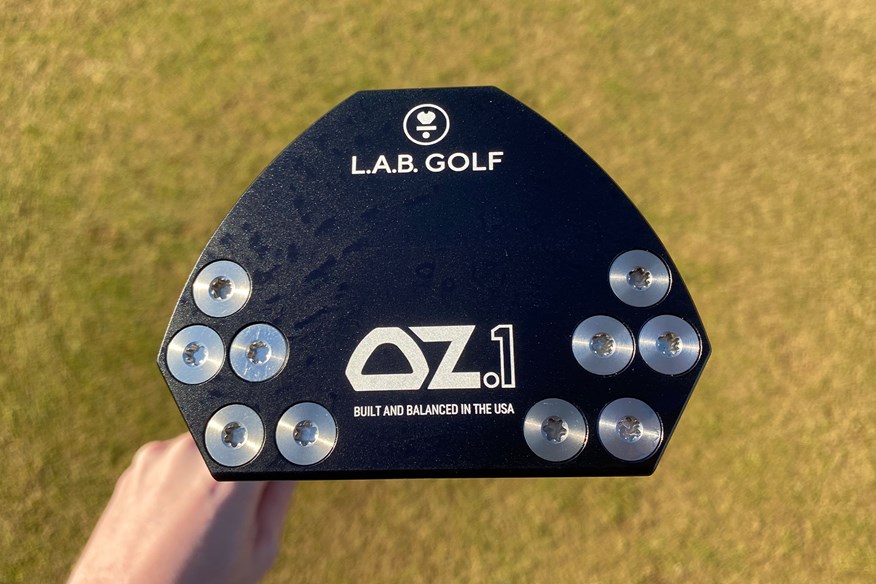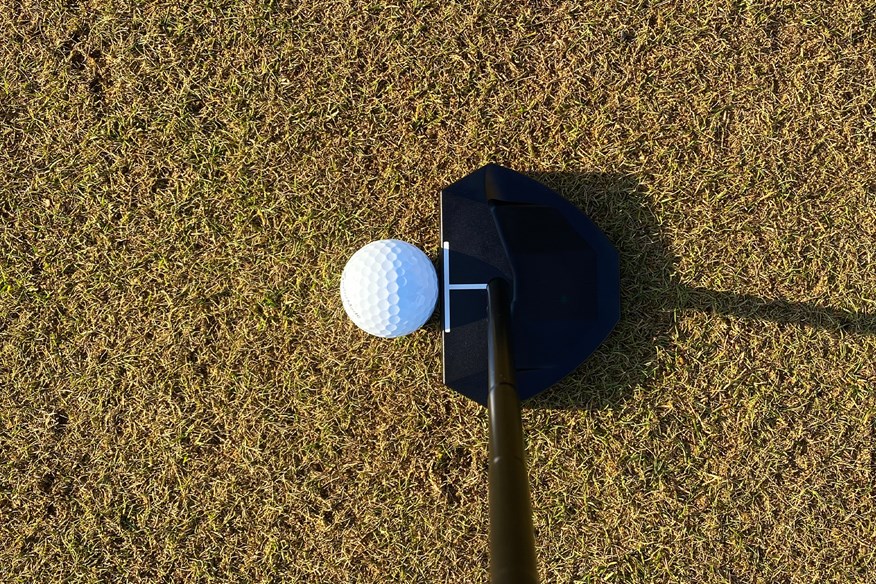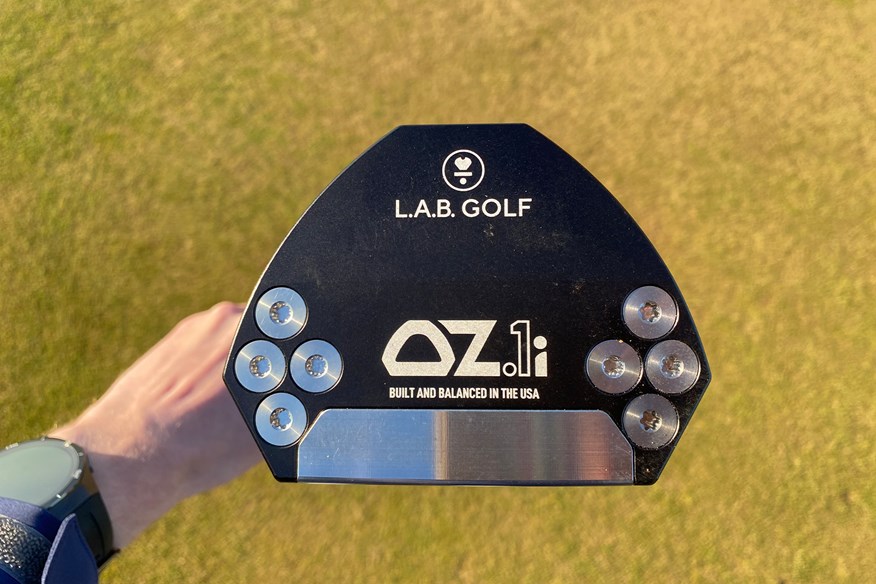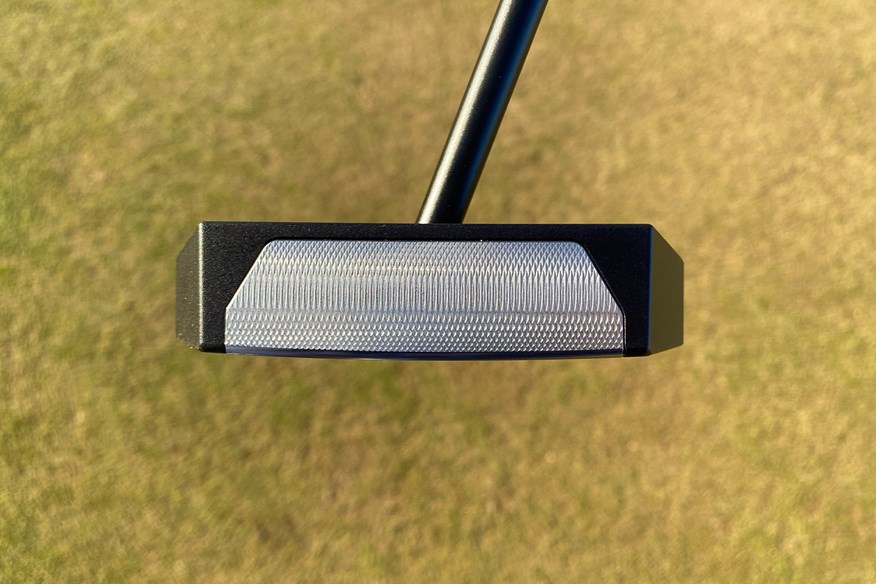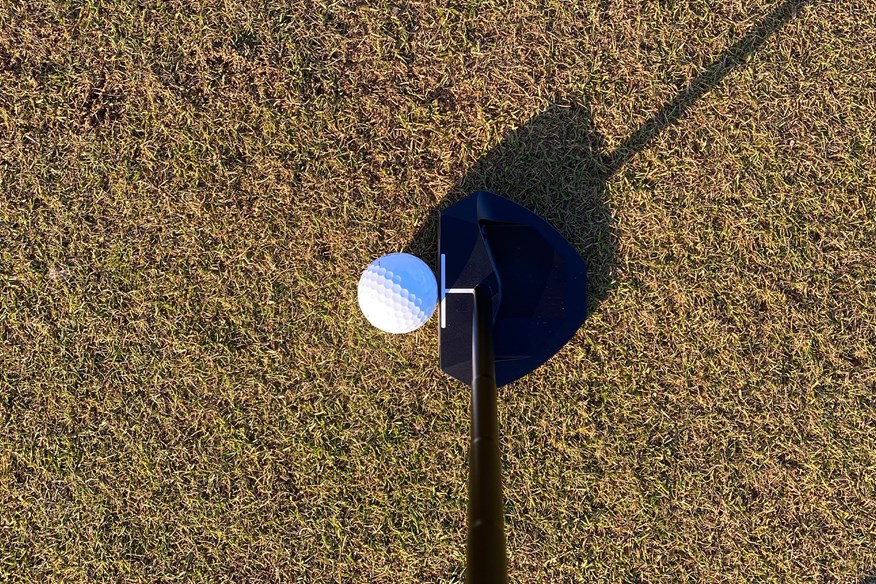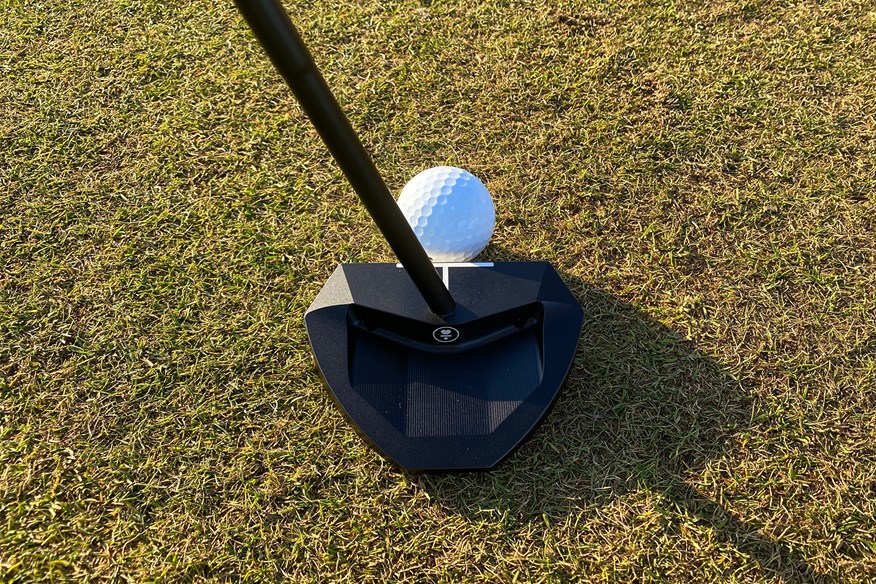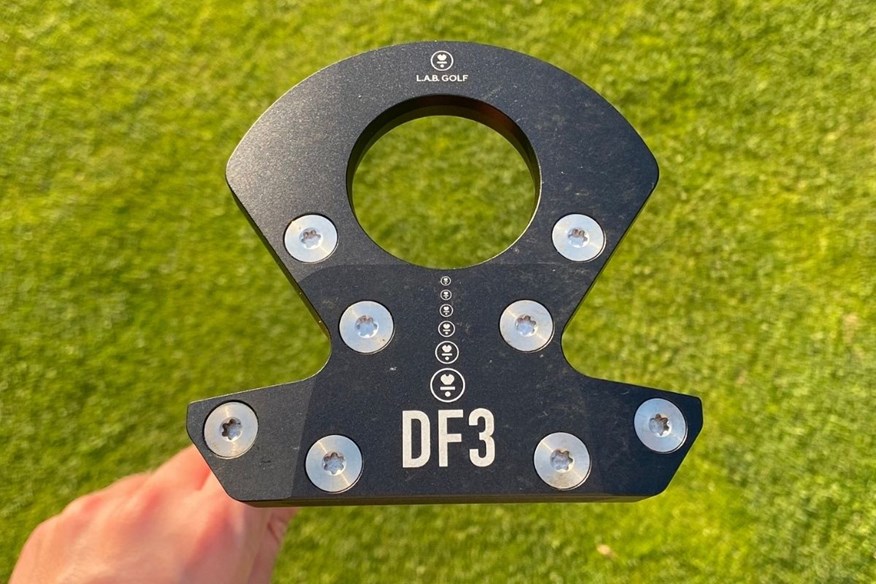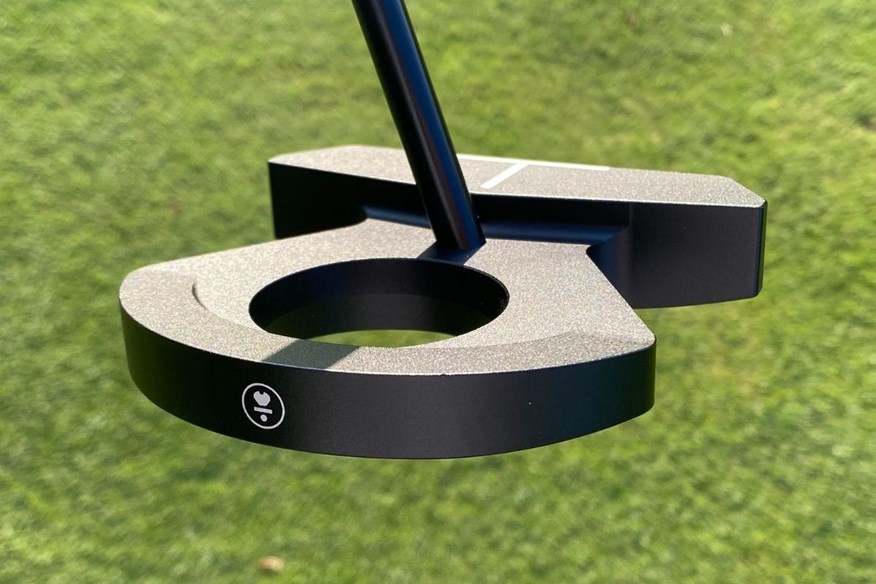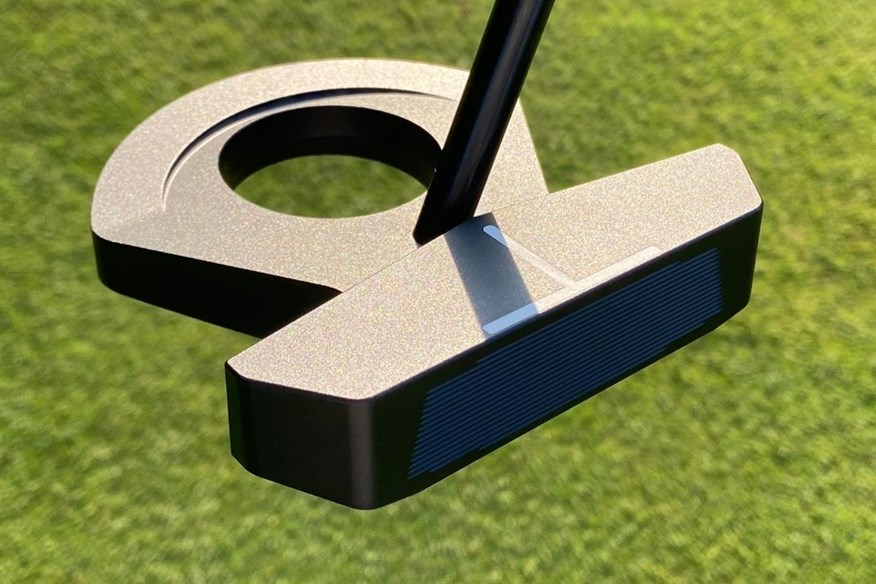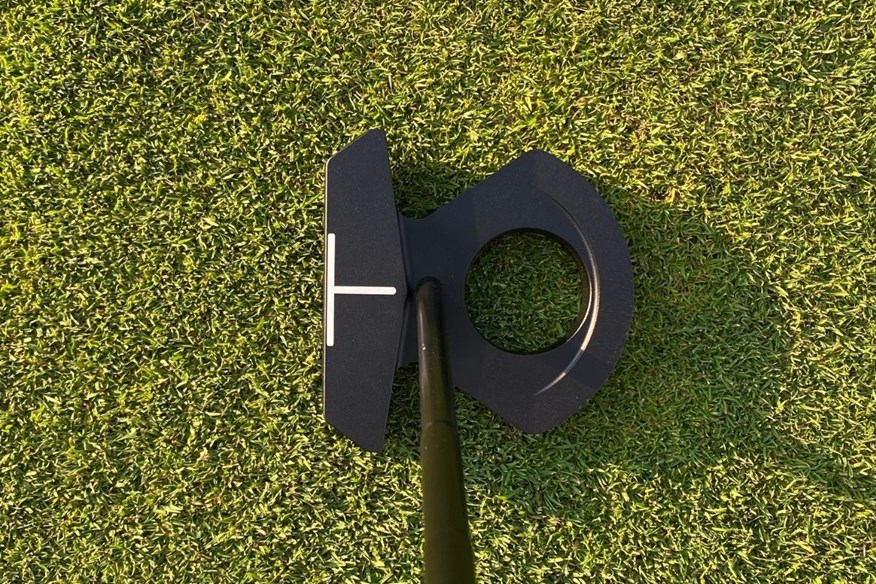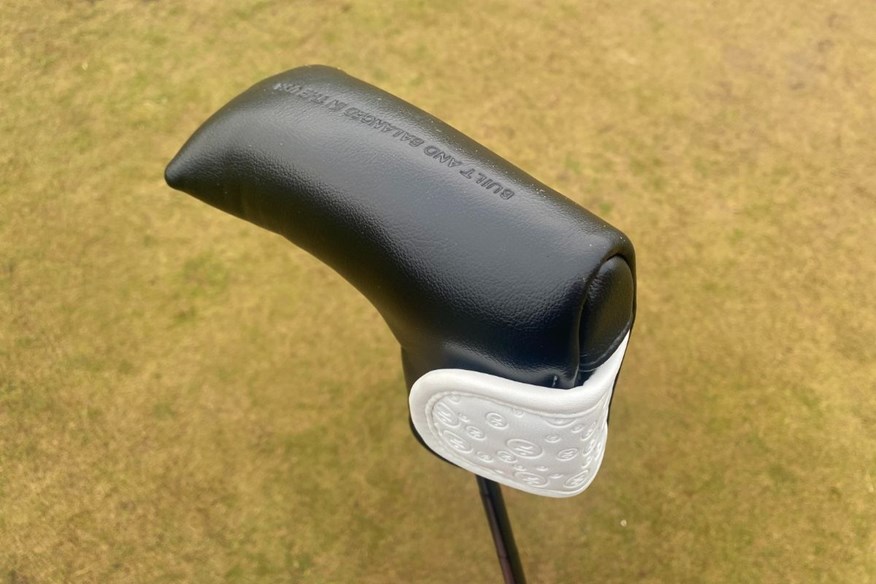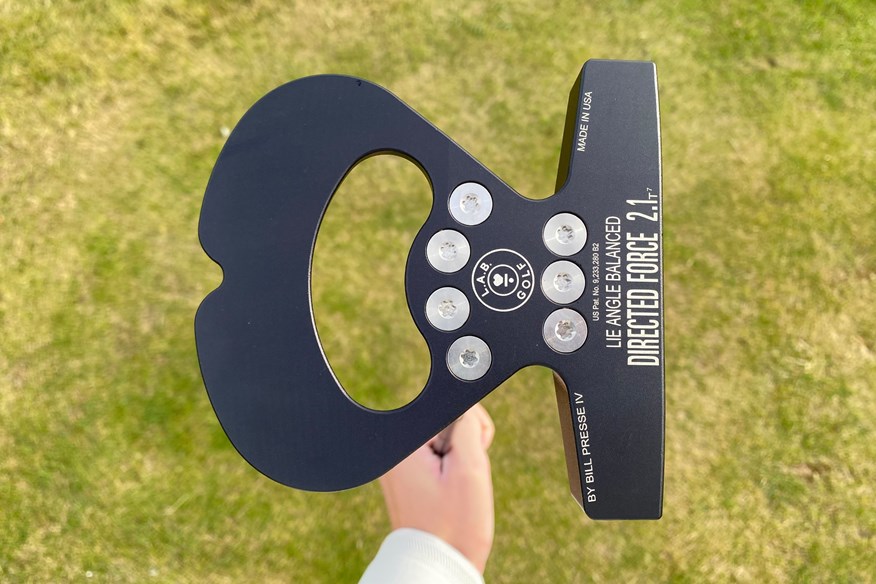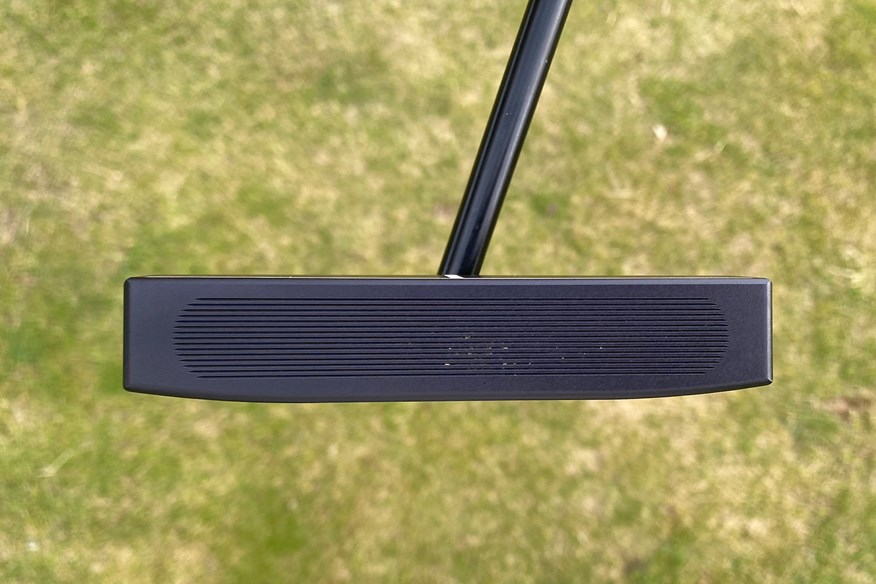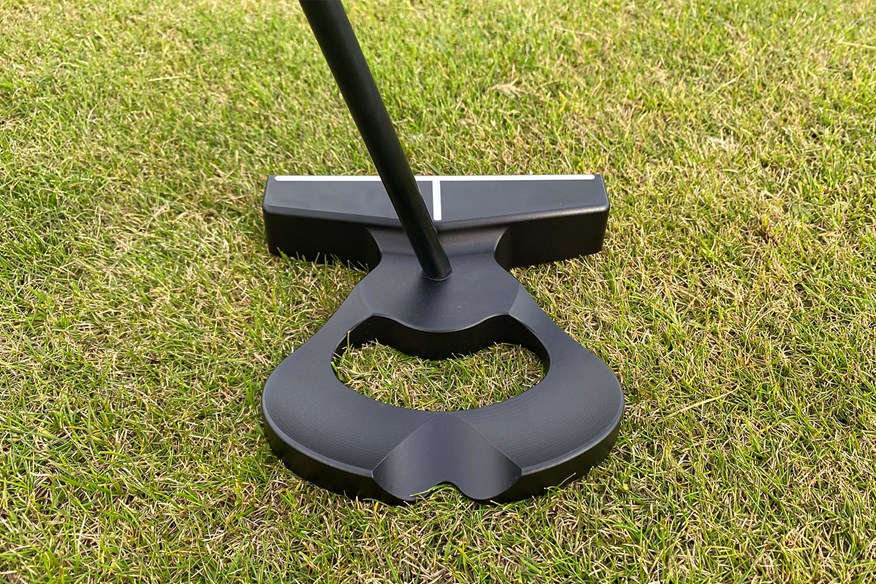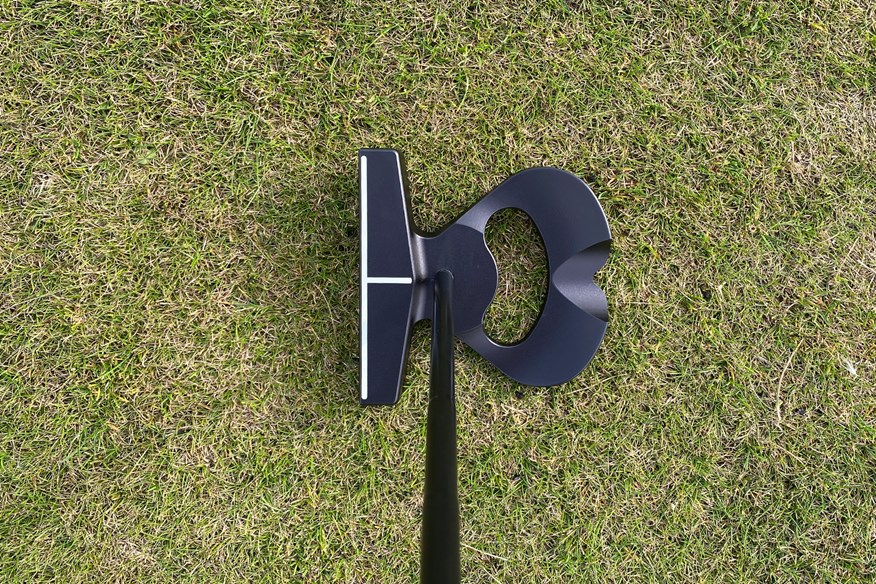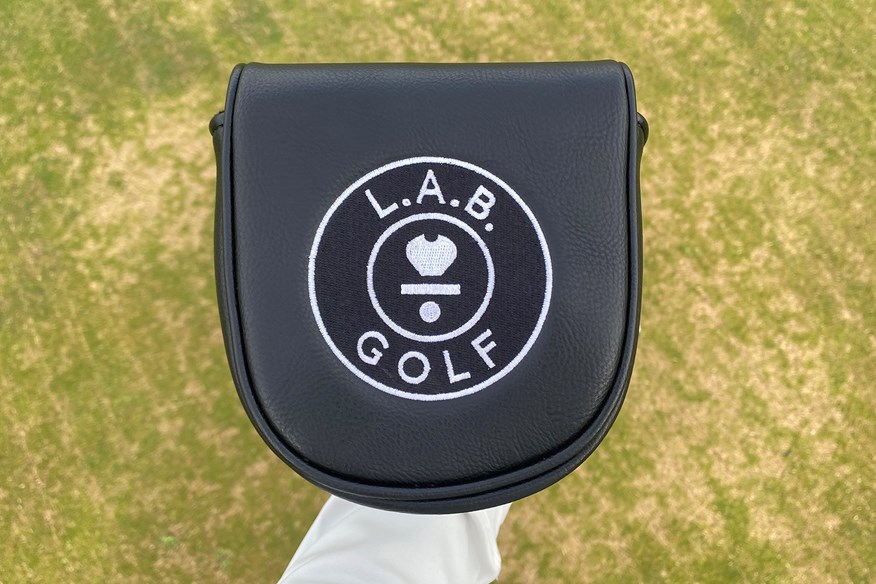Best L.A.B. Golf Putters: Which zero-torque model are you choosing?
Last updated:
Click here to find out how we conducted our 2025 golf putters test
Zero-torque putters continue to grow in popularity, and that’s largely due to the emergence of L.A.B. Golf and their increased prevalence in the game. With seven models to choose from, which one deserves a place in your bag?
Jump to:
Having only been producing putters since 2018, it’s pretty incredible to see what L.A.B. Golf have achieved in such a short time. L.A.B. Golf have grown huge popularity over recent years thanks to zero-torque putters being one of the hottest trends in the modern game. If you’re looking for one of the best putters in the game right now, L.A.B. Golf has to be a brand you consider.
Not every golfer will benefit from L.A.B. Golf’s ‘Lie Angle Balanced’ – hence the name – technology, but if you’re someone who does (like myself) once you’ve putted with a L.A.B. Golf putter or any of the best zero-torque putters, you’ll struggle to revert to one of the best mallets or best blade putters.
I’ve mentioned how quickly L.A.B. Golf’s presence in the game has increased, and that’s true both on Tour and at club level. You don’t have to look far down the men’s and women’s world rankings before finding a golfer with one of the best L.A.B. Golf putters in their bags.
From Adam Scott (who helped L.A.B. Golf design the OZ.1), 2025 US Open champion, J.J. Spaun, and Brian Harman to Minjee Lee and Hyo Joo Kim, along with many others, some of the best golfers in the game have ditched their blade and mallet putters for a zero-torque model, and plenty more are following.
Best L.A.B. Golf putters: At a glance
Best overall – L.A.B. Golf MEZZ.1 MAX | View Offer
Best-looking – L.A.B. Golf OZ.1 | View Offer
Best feeling – L.A.B. Golf DF3 | View Offer
You’re probably well aware of what a zero-torque putter is now, but for those who might not know, allow me to give you a little crash course on the subject. Traditionally, putters rest in either a face-balanced position or have a varying degree of toe-hang. In contrast, zero-torque putters sit toe-up with the face resting perpendicular to the ground.
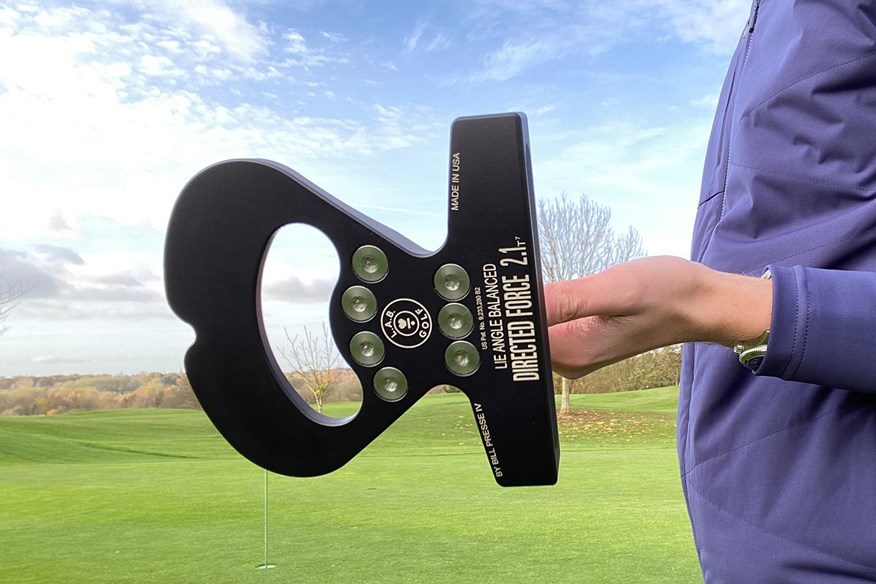
Zero-torque putters are designed to work for all putting strokes. The head is created in a way that it will resist the twist and maintain square to your target throughout your stroke – as long as you don’t manipulate the putter in any way.
Directed Force (the company acquired and relaunched by L.A.B. Golf CEO Sam Hahn) built a device called the Revealer to better understand how putters torque and rotate during the putting stroke. Only by inventing the device, which allows putters to hang freely while being swung, was it possible to firstly spot how putters want to rotate during the stroke, but also to design a putter that didn’t twist or spin at all.
With L.A.B. Golf gaining so much attention and popularity, other brands have joined the zero-torque revolution and produced models of their own, including Odyssey (Ai-One Square 2 Square range), TaylorMade (Spider ZT), PXG (Allan and Bat Attack), Bettinardi (Antidote range), and Evnroll (Zero range). The competition is certainly improving, and there is an argument that L.A.B. Golf have been dethroned as the Kings of zero-torque. Do you agree?
Toe-up putters have never gained as much traction as they have since L.A.B. Golf began producing zero-torque models. The Axis 1 used by Justin Rose was a toe-up putter, and almost 10 years ago, Odyssey launched Toe Up putters. There have been other attempts made in the past, but L.A.B. Golf were the first brand to manufacture zero-torque putters that have had major global uptake at all levels.
L.A.B. Golf putters are designed not to twist to the path of your backswing and downswing. It means the company insists golfers get fitted for each model (which can be done online here), as it’s vitally important to match the lie angle of the putter to how you putt to ensure maximum effectiveness. The idea also does away with the fitting of putters to stroke type.
If you buy into the concept, take the time to get fitted properly, and don’t mind an unusual head shape, a L.A.B. Golf putter will deliver great results. They aren’t going to be everyone’s cup of tea – Hahn himself knows L.A.B. Golf offers some “absurd head designs”. But if you can look beyond the appearance, you’ll struggle to find any criticisms of any of the best L.A.B. Golf putters.
Best L.A.B. Golf putters
A forgiving model that resembles the popular fang-style mallet design
This is one of the most popular zero-torque models on Tour, most notably being used by Adam Scott, Hyo Joo Kim, Will Zalatoris, Lucas Glover, Charl Schwartzel, Yealimi Noh, and many others.
This is arguably the most conservative L.A.B. Golf putter (apart from the LINK.1), and that makes it popular among amateur golfers, as well as Tour pros. Fang-style mallets are very well-liked, so it's no surprise to see this model being so widely used.
The MEZZ.1 MAX is 20 percent larger than the MEZZ.1. The increased size of the MEZZ.1 MAX makes it more forgiving and stable than its smaller counterpart.
The midsection of the putter is fully CNC machined from 303 stainless to improve feel. The body is fully CNC milled from a billet of 6061 aircraft aluminum to further improve forgiveness.
Pros
- Highly forgiving
- Super stable putter
- Amazing roll
Cons
- Can't pick the ball up
| Loft | 3° |
| Lie Angle | 63° - 79.5° |
| Length | 28" - 38" |
- 303 Stainless steel midsection
- 6061 Aircraft aluminum body
- Built-in forward press
The most eye-catching L.A.B. Golf putter
However, the OZ.1 (and OZ.1i) does have Tour approval, being used by Dustin Johnson, Nicolas Colsaerts, Garrick Higgo (OZ.1i), Phillip Archer (OZ.1i), and others. Both the OZ.1 and OZ.1i have been well-received since their release. They are the most recent L.A.B. Golf putters to be introduced, but they instantly make their way into the shortlist for the best L.A.B. Golf putters.
The OZ.1i performed well in our 2025 putters test, but I think, had we tested the OZ.1, it could have beaten the MEZZ.1 MAX. I think this is down to the 303 stainless steel insert. The 100 percent 6061 aluminium head of the OZ.1 produces a better roll, feedback, and feel.
That being said, it's almost impossible to criticize the OZ.1i in all of those areas, I just feel the OZ.1 is better. You might disagree, so it's worth testing both. It also depends on whether you like a stainless steel face or not.
One of the biggest selling points of the OZ.1 (and OZ.1i) is the ability to choose between forward shaft lean or a vertical shaft (like a traditional blade or mallet).
Pros
- Incredibly stable
- Best-looking L.A.B. Golf putter
- Available with vertical or forward shaft lean
Cons
- Smaller head isn't as easy to align
| Loft | 3° |
| Lie angle | 63° - 79.5° |
| Length | 28" - 38" |
- 6061 Aluminum head
- 303 Stainless steel insert (OZ.1i)
- Vertical or forward shaft lean
- Designed with Adam Scott
The most recognisable L.A.B. Golf putter
The DF3 is the smaller, more compact version of L.A.B. Golf's first-ever putter, the DF 2.1. L.A.B. Golf listened to comments made about the DF 2.1, mainly concerning its size, and in their words, made the putter less "weird" to create the DF3. It's a smaller and sleeker model, but it's still packed with the same outstanding technology that makes L.A.B. Golf so highly respected.
Forgiveness is a trait of every L.A.B. Golf putter, but this is perhaps the best model if you want a putter that's going to get people talking, isn't overly large, and delivers a forgiving roll putt after putt.
I imagine the DF3 is the first putter that comes to mind for most golfers when they think about L.A.B. Golf, and I think that's because it's the model that perfectly encapsulates everything L.A.B. Golf stands for and offers.
The roll and stability of the DF3 make this putter perform superbly on the putting surface, and it has to be a L.A.B. Golf putter you consider, even if you're initially put off by its appearance.
Pros
- Feels amazing
- Great stability
- Loads of customisation options
Cons
- Design isn't to everyone's liking
| Loft | 3° |
| Lie angle | 63° - 79.5° |
| Length | 28" - 38" |
- Lie Angle Balance technology
- Gimme getter
- Built-in forward press
Perfect for golfers who love blade putters but want to take advantage of zero-torque technology
The LINK.1 might not be as popular on Tour as the other models, but it is in play for Jhonattan Vegas. It's partly down to the fact that most blade users are using blade putters because they like to feel the head close at impact - they like torque.
If you're currently using a blade because you prefer the way it looks behind the ball, but you're constantly fighting the head, the LINK.1 is a great option because the toe and heel-weight blade is going to work with you, and you won't have to manipulate the face to keep it square.
The LINK.1 head is 100 percent CNC Milled from 303 stainless steel, and again, this helps to make it look more conventional, and in a line-up of blade putters, you wouldn't be able to know it's zero-torque (unless you knew - obviously).
Pros
- Traditional blade style will make this putter more appealling
- Extremely stable
- Amazing roll and feedback
Cons
- Not intended to play like a traditional blade, but if you're not prepared for that and you require a blade, it could harm your putting
| Loft | 2° |
| Lie angle | 65° - 75° |
| Length | 28" - 36" |
- 303 Stainless steel
- 100% CNC Milled
The original L.A.B. Golf putter
Bland did have a brief encounter with the Odyssey Ai-One Square 2 Square Max Stripe at the 2025 Senior PGA Championship, having won the 2024 playing and the Senior US Open in the same year with the DF 2.1. The LIV golfer has switched straight back to the DF 2.1 from LIV Golf Virginia.
The DF 2.1 is where it all started for L.A.B. Golf, which was Directed Force (hence the DF). This putter is rather large and isn't the prettiest, but what it lacks in appeal, it certainly makes up for in performance.
This model was specifically designed to allow golfers to deliver a square putter face to the back of the ball on every single putt. The branding iron shape naturally wants to stay square to your path, and thanks to the wide and hollow shape, it’s also incredibly stable on off-center hits.
The DF 2.1 works with your stroke, not against it, as torque-free balancing helps golfers consistently repeat the same stroke with less effort.
The head shape is certainly unconventional, and L.A.B. Golf openly admits that unless you’re searching for ultimate forgiveness, their less weird and slightly smaller DF3 might be a better option.
Pros
- Extremely forgiving
- Super stable
- Easy to square the face
Cons
- The look takes some getting used to
| Loft | 3.5° |
| Length | 28" - 38" |
| Lie angle | 63° - 79.5° |
- Type-3 Anodized finish
- 100% CNC milled
- Precision forged 6061 aircraft aluminum
- 38 Different alignment markings
Best L.A.B. Golf putters: Buying guide
With all L.A.B. Golf putters, there are a lot of factors to consider, but none of them are particularly difficult to wrap your head around, and should you take advantage of an in-person or online fitting, much of the work should be done for you. However, it’s important to understand exactly what goes into constructing a L.A.B. Golf putter so you have an understanding of the product you’re purchasing.
Shaft length
The length of the putter is crucial. L.A.B. Golf offers a wide range of lengths, whether you opt for a standard length putter, armlock, or broomstick. Standard length L.A.B. Golf putters range from 28 to 38 inches, 38 to 46 inches in armlock, and 40 to 50 inches in broomstick. Having such a wide range of lengths opens L.A.B. Golf putters up to a wider range of golfers.
The correct length depends on your posture and how your eyes align over the ball. Using a putter of the right length promotes better mechanics and consistency.
To determine whether an armlock or broomstick putter works for you, I’d strongly suggest testing one before purchasing because they won’t suit everyone. Minjee Lee switched to a broomstick putter over the offseason, and she was testing her new putter for 4-6 weeks before putting it in the bag.
Weight
Weight plays a significant role in putters. Heavier putters tend to produce a smoother, pendulum-like stroke and are useful on slower greens, whereas lighter putters offer more feel and control on faster greens.
Depending on your miss, this might also influence whether you want a heavier or lighter putter. For instance, if you tend to leave putts short, opting for a heavier head could help you get the ball to the hole. Whereas, if you typically race putts past the hole, going for a lighter putter might assist you in getting putts to reach the hole at dead weight.
With custom L.A.B. Golf putters, you have the option to choose whether you want the head to be heavier or lighter. It’s important to mention that with L.A.B. Golf putters, the weights are not to be touched after you purchase your putter because it will void any warranty.
Balance
Every L.A.B. Golf putter is Lie Angle Balanced (hence the name). Zero-torque putters sit toe-up when you hold them by their balancing point. L.A.B. Golf putters are incredibly stable because of how well balanced they are. The balance helps ensure they remain square to their target through your stroke, provided you don’t manipulate the face in any way.
Lie angle
Lie angle isn’t as commonly considered in a putter as it is with a set of irons, but it definitely should be. Especially with a L.A.B. Golf putter. Finding the right lie angle will help with your alignment because the putter will sit square at address. Given how important it is for a zero-torque putter to sit square, having a putter with the right lie angle can massively improve your putting. It will also influence the direction of your putts, in the same way it does with irons, and it will make the putter feel more comfortable because you won’t have to manipulate the putter so it sits flat. With all L.A.B. golf putters (apart from the LINK.1), you can go as flat as 63° and as upright as 79.5° (65° – 75° with the LINK.1).
Loft
Getting the ball rolling as soon as possible is key to consistent putting, and the best way to achieve this is by having the right loft at impact. Every L.A.B. Golf putter comes with a specific loft that has been carefully selected to ensure you are presenting the correct amount of loft at impact. The roll off every model is very positive, and that’s possible because each putter has the correct loft.
Grip
Unlike any other club in your bag, there’s no “correct” way to grip a putter. Comfort and consistency are what matter most. Some players go traditional, others get creative – if it helps you hole putts, it works. The key is finding a grip that suits how you hold the putter. If you place both thumbs down the front, a wider grip can add stability. If your grip mimics how you hold your irons, a slimmer option might feel more natural.
L.A.B. Golf’s putter grips differ from other brands because they have been designed to work with the forward shaft lean. You are encouraged to use a press grip with any L.A.B. Golf putter that’s fitted with a shaft with shaft lean because it prompts you to push your hands forward. You have the option of 1.5°, 2°, and 3° press grips in either a plain or textured finish. You can always elect to use a standard grip, and these work fine with the OZ.1 and OZ.1i, should you choose to have a vertical shaft, but they aren’t recommended if you go for a L.A.B. Golf putter with shaft lean.
Alignment aids
Alignment aids come in all shapes and sizes, from a single dot to a wide stripe running from the putter face to the back of the head. They can also come in different colours. The colour you like most might not be the best colour to help you hole more putts.
L.A.B. Golf have the most customisation possible of all putter brands. With all putters, barring the LINK.1, there are eight head colours to choose from and up to 46 alignment options (depending on the model).
Every golfer sees the line differently, so the right alignment aid is a personal thing. What helps one player square up might totally confuse another. A simple way to test if an alignment feature works for you is to line up a putt, step in as if you’re going to hit it, then walk behind the ball and check where the face is actually pointing. If it’s bang on, great – that style suits your eye. If it’s off, it’s worth trying something else.
Sound and feel
Putting is a highly personal experience, and sound and feel play a huge role in that. The material of the putter head — whether it’s milled 303 stainless steel or 6061 aluminium — can influence how it sounds and feels at impact. There’s no right or wrong here; what one golfer dislikes, another might love. The key is to find a putter that feels and sounds right for you. After all, you’re the one making the putts, not anyone else.
Price
L.A.B. Golf putters range in price depending on whether you opt for a stock or custom model. Stock models start from £389.00 and rise to £499.00. I would always recommend getting a L.A.B. Golf putter custom-fitted, but obviously, that does come at an extra cost.
Custom L.A.B. Golf putters start at £539.00 but can cost over £1,000 with certain extras. It is a big investment. However, many golfers are happy to spend big bucks on a driver and not invest in a quality putter, which can make a real difference to your game. It’s the club you use most often, the one that can save you the most shots, and the one you’re likely to hold onto for the longest.
Consider this: even if you buy a L.A.B. Golf putter for £650 and keep it for 10 years (which is shorter than the average), that’s just £65 per year. When you look at it that way, the investment really starts to make sense.
Best L.A.B. Golf putters: FAQs
-
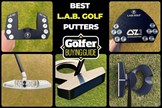 Best L.A.B. Golf Putters
Best L.A.B. Golf Putters
-
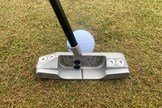 L.A.B. Golf LINK.1 putter is very stable
L.A.B. Golf LINK.1 putter is very stable
-
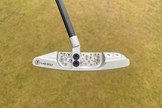 L.A.B. Golf LINK.1 putter looks like a traditional blade
L.A.B. Golf LINK.1 putter looks like a traditional blade
-
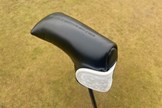 L.A.B. Golf LINK.1 putter headcover
L.A.B. Golf LINK.1 putter headcover
-
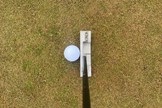 L.A.B. Golf LINK.1 putter produces a great roll and feedback
L.A.B. Golf LINK.1 putter produces a great roll and feedback
-
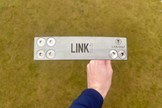 L.A.B. Golf LINK.1 Putter
L.A.B. Golf LINK.1 Putter
-
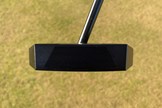 L.A.B. Golf OZ.1 Putter is made from 6061 aluminium
L.A.B. Golf OZ.1 Putter is made from 6061 aluminium
-
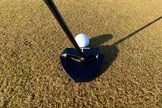 L.A.B. Golf OZ.1 Putter is extremely stable
L.A.B. Golf OZ.1 Putter is extremely stable
-
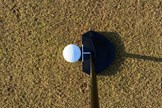 L.A.B. Golf OZ.1 Putter is the msot eye-ctaching model
L.A.B. Golf OZ.1 Putter is the msot eye-ctaching model
-
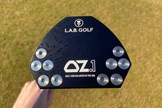 L.A.B Golf OZ.1 Putter
L.A.B Golf OZ.1 Putter
